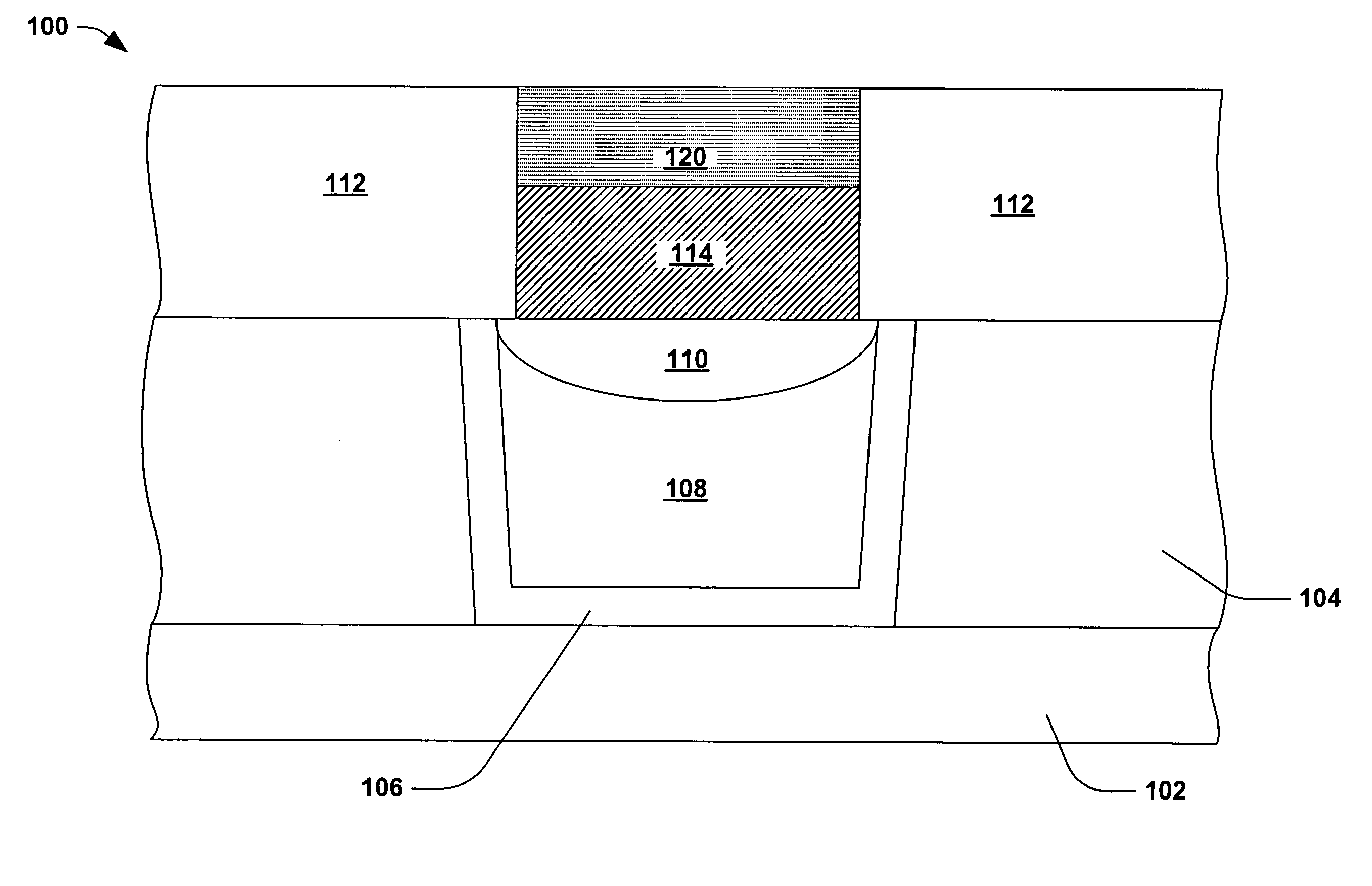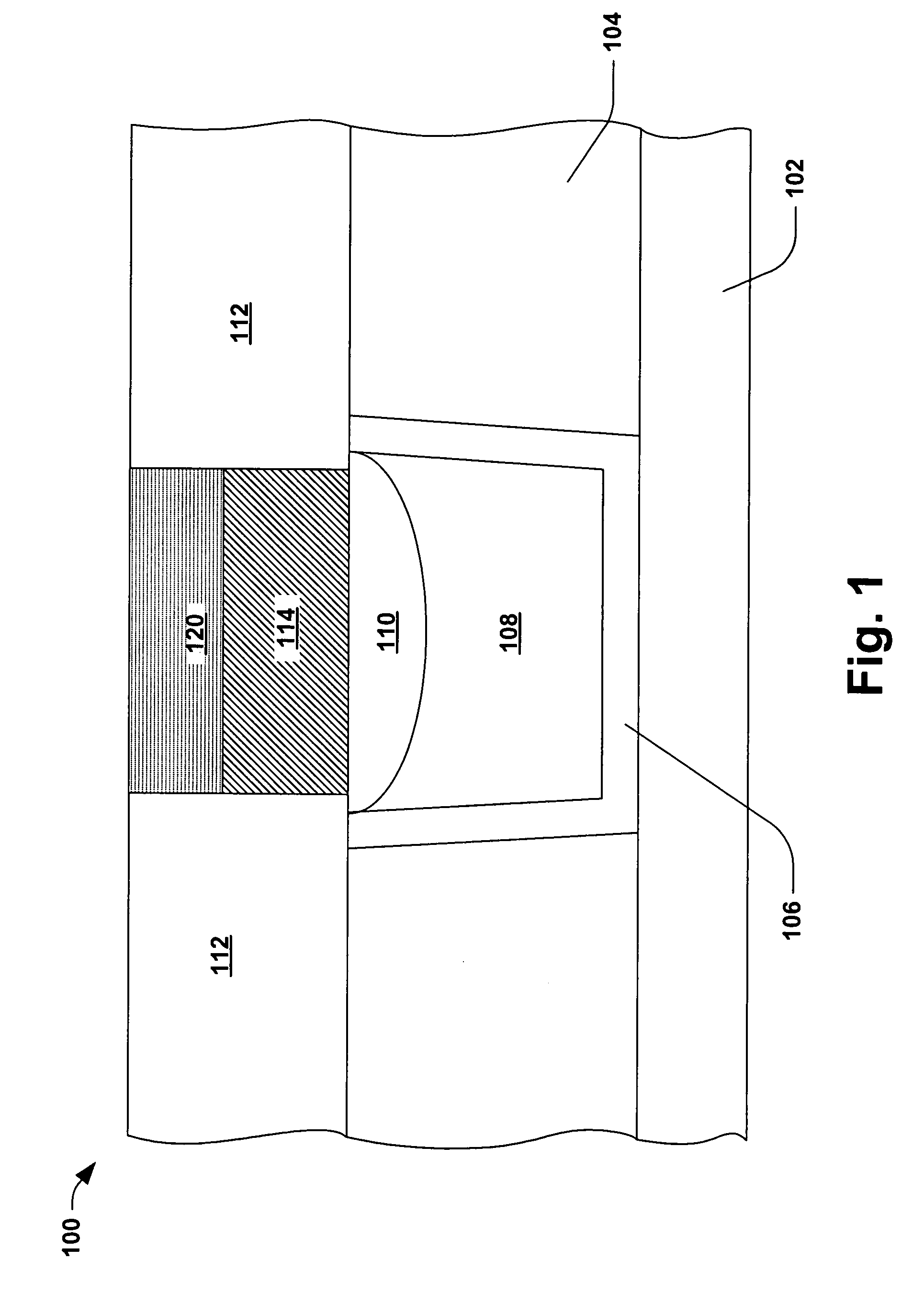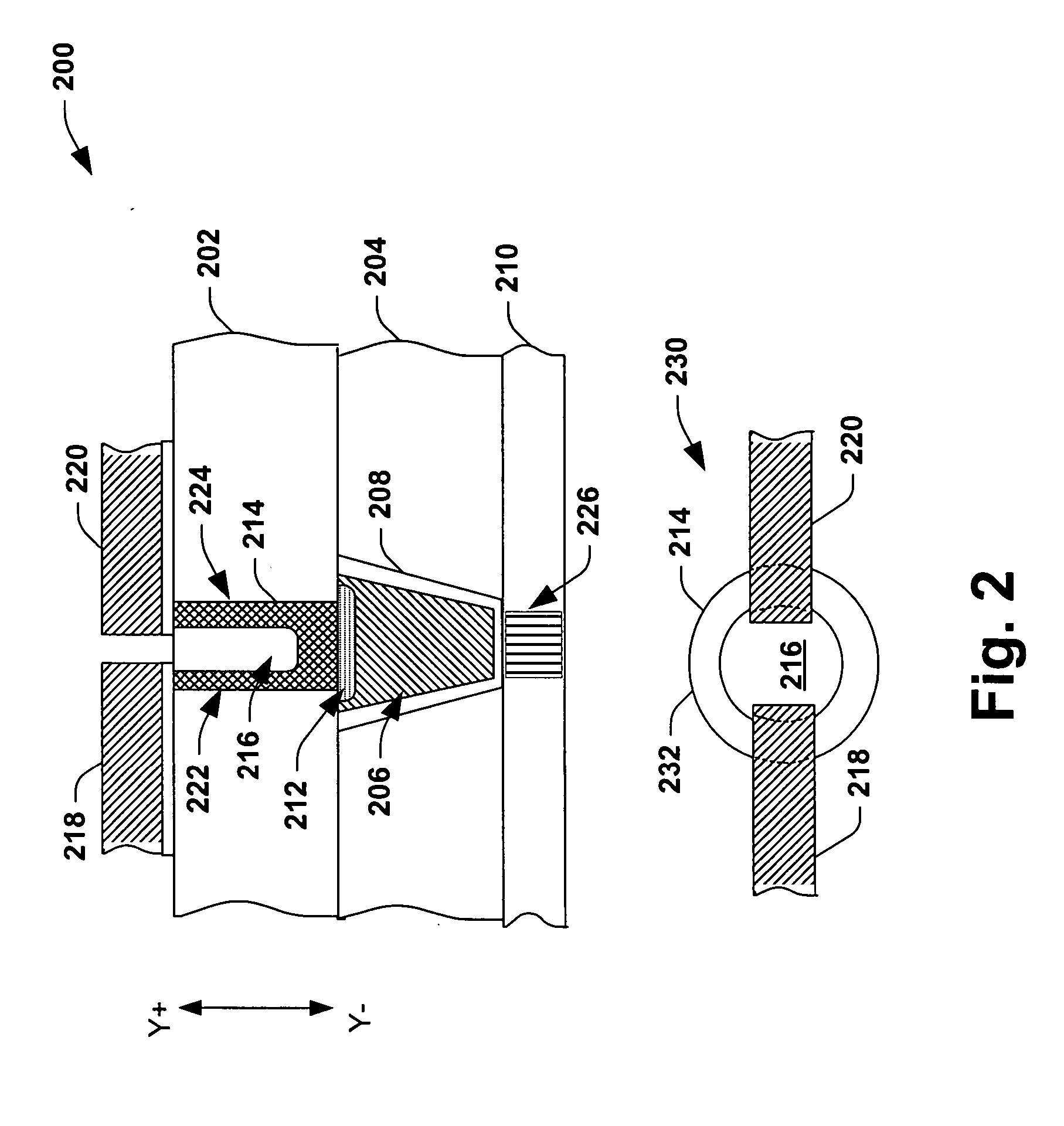In-situ surface treatment for memory cell formation
a memory cell and surface treatment technology, applied in the field of semiconductor fabrication, can solve the problems of slowest than other types of storage devices, volatile memory cells usually lose their information, and silicon-based devices are approaching their fundamental physical size limits, so as to reduce the drawbacks inherent in conventional inorganic memory, limit device performance capabilities, and reduce the effect of density
- Summary
- Abstract
- Description
- Claims
- Application Information
AI Technical Summary
Benefits of technology
Problems solved by technology
Method used
Image
Examples
Embodiment Construction
[0035] The present invention is now described with reference to the drawings, wherein like reference numerals are used to refer to like elements throughout. In the following description, for purposes of explanation, numerous specific details are set forth in order to provide a thorough understanding of the present invention. It may be evident, however, to one skilled in the art that one or more aspects of the present invention may be practiced with a lesser degree of these specific details. In other instances, known structures and devices may be shown in block diagram form in order to facilitate describing one or more aspects of the present invention.
[0036]FIG. 1 is a cross sectional illustration of an organic memory cell 100, a portion of which can be formed according to one or more aspects of the present invention. Organic memory cells are memory devices that are, at least partly, based on organic materials and, are thus able to overcome some of the limitations of inorganic based...
PUM
| Property | Measurement | Unit |
|---|---|---|
| thickness | aaaaa | aaaaa |
| thickness | aaaaa | aaaaa |
| thickness | aaaaa | aaaaa |
Abstract
Description
Claims
Application Information
 Login to View More
Login to View More - R&D
- Intellectual Property
- Life Sciences
- Materials
- Tech Scout
- Unparalleled Data Quality
- Higher Quality Content
- 60% Fewer Hallucinations
Browse by: Latest US Patents, China's latest patents, Technical Efficacy Thesaurus, Application Domain, Technology Topic, Popular Technical Reports.
© 2025 PatSnap. All rights reserved.Legal|Privacy policy|Modern Slavery Act Transparency Statement|Sitemap|About US| Contact US: help@patsnap.com



